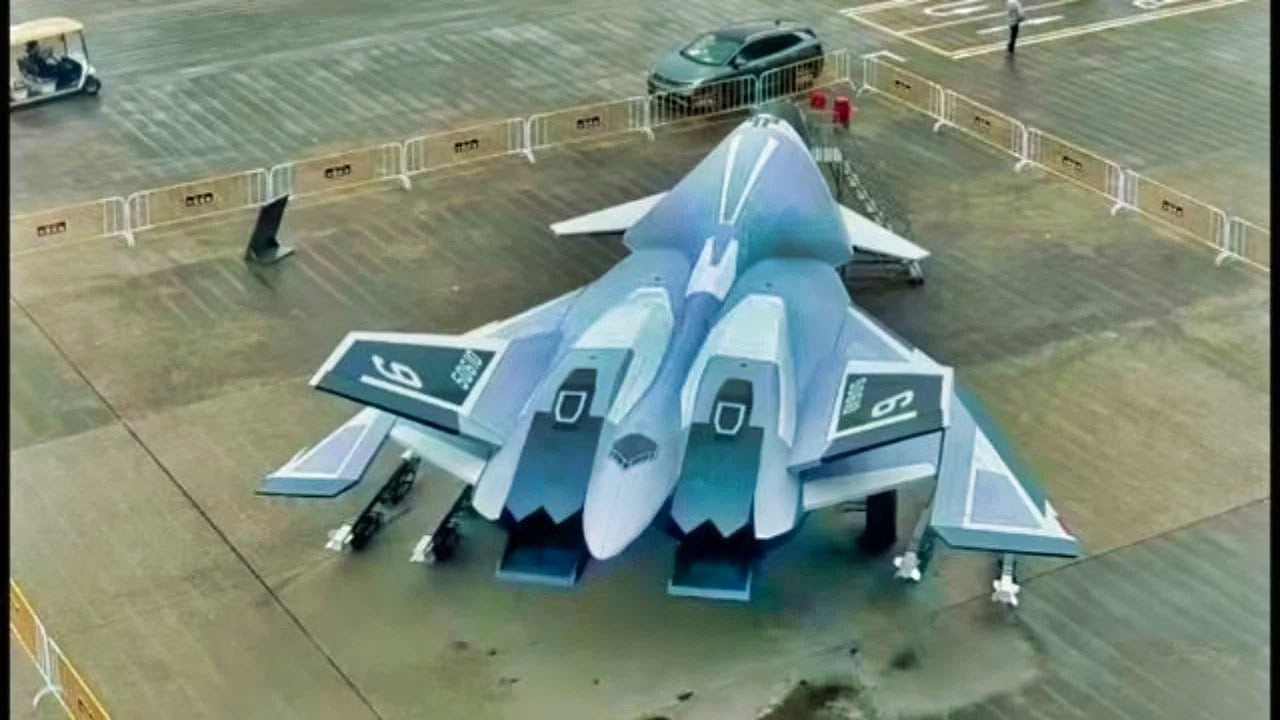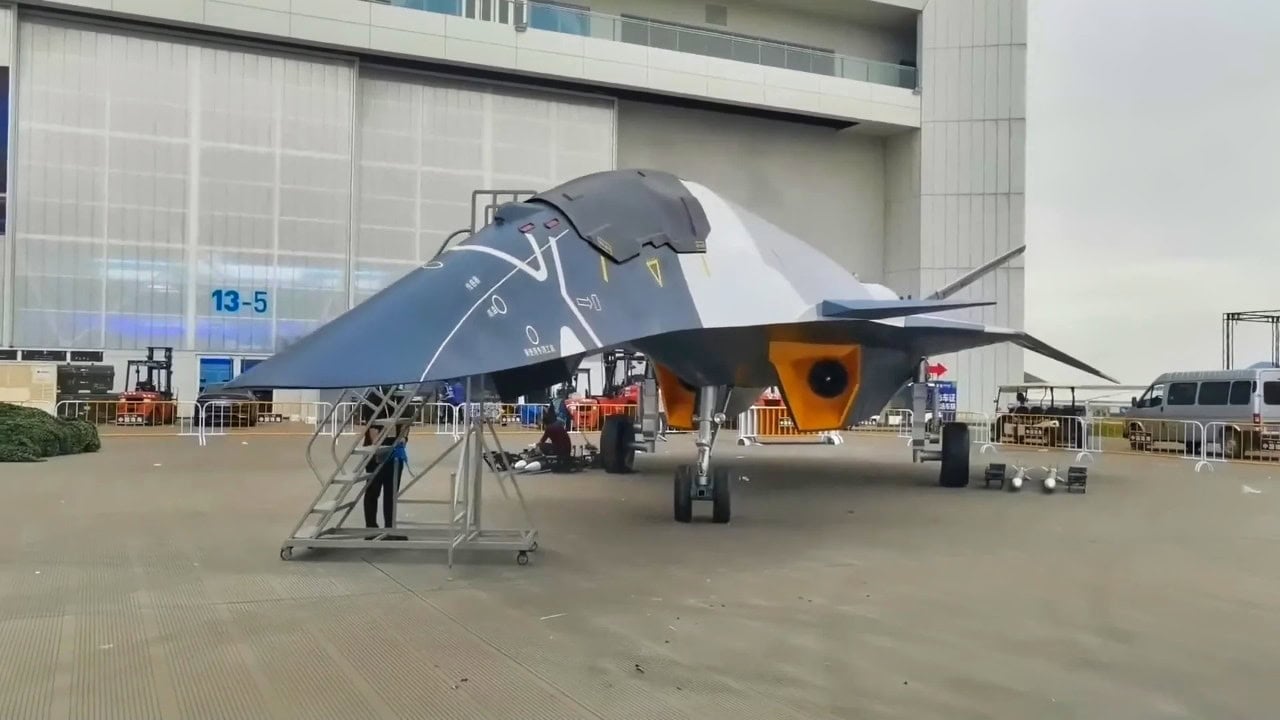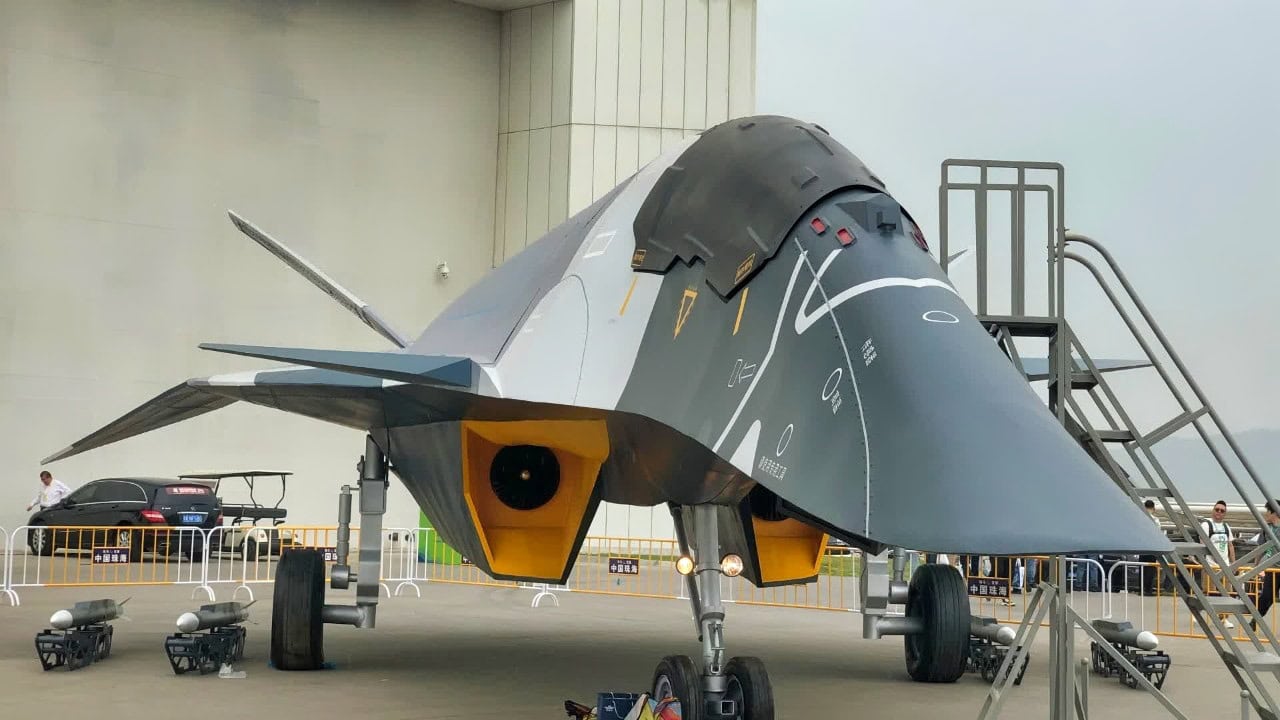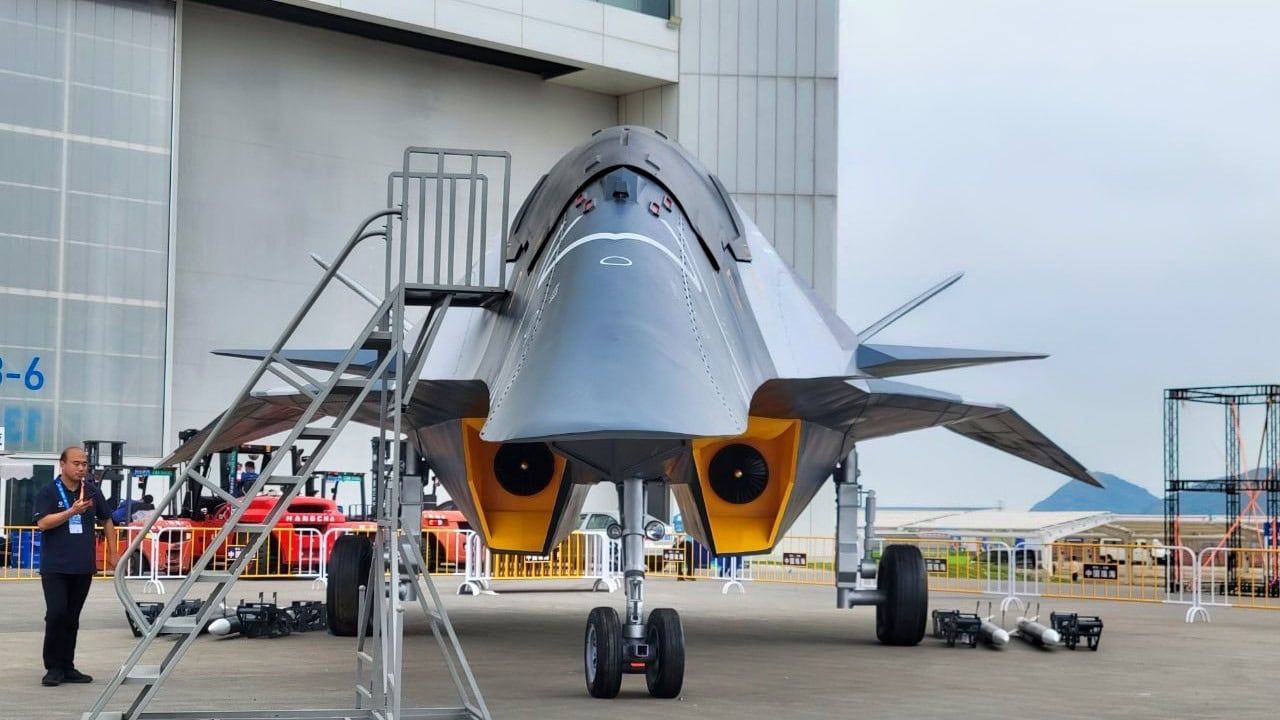Key Points and Summary: The Air Force’s Next-Generation Air Dominance (NGAD) program, aimed at maintaining U.S. air superiority against China and Russia, faces uncertainty under the Trump administration.
-Outgoing Air Force Secretary Frank Kendall paused the $300 million-per-plane project, citing high costs and design concerns, leaving its future in the hands of incoming officials.
-Proposals to merge NGAD with the Navy’s F/A-XX program could cut costs but may face resistance.
-With Musk and Ramaswamy’s Department of Government Efficiency pushing for fiscal restraint and a new acquisition chief reviewing all programs, NGAD’s ability to survive depends on proving its value in a contested budget environment.
Air Force’s NGAD Fighter: The $300M Question
Air Force Secretary Frank Kendall never fails to disappoint when voicing his opinion. The outgoing service branch leader is a loquacious speaker, which is nice for 19FortyFive as we give you the most up-to-date information on airplane development based on some of his most colorful quotes. Kendall offered what appears to be his final thoughts on the future of the Air Force and was candid as usual in an interview on January 7.
Kendall first referenced a viral video of what may be China’s 6th generation airplane that many military observers think will give China the edge.
“I’ve been watching China modernize their military for quite a while,” Kendall said. “They’re working aggressively to build a military designed to keep the U.S. out of the Western Pacific, and I think, over time, they have more ambitions than even that.”
“Strategically, they’ve already shown that they’re going to modernize their strategic forces and dramatically increase their inventory of nuclear weapons. And in space, they’re doing similar things, right? They’re really militarizing space at a high rate. So that was already baked into all the things we were thinking about, and the arrival of those … airplanes, visible to the public, hasn’t really changed that,” he said.
NGAD’s Future Is Not Clear
Kendall doesn’t think that China’s new warbird will affect the way the Air Force approaches its Next-Generation Air Dominance (NGAD) fighter.
The service chief placed the NGAD on operational pause as it has dealt with a high price of development (at $300 million each) and design questions.

Chinese NGAD White Emperor Fighter Plane from China. Image Credit: X Screenshot.
The NGAD program was supposed to restart operations by January 1.
Still, then Kendall decided to delay again until the incoming Trump national security team had a chance to review the project and determine whether it had a future.
But It Flew Already
Thankfully for the Air Force, a version of the NGAD actually flew in 2020.
So that research and development data can be used by the new Secretary of the Air Force to evaluate its future. The incoming secretary is yet to be nominated.
NGAD is needed to keep up with the Chinese and Russians, but the high price and lack of consensus on design has plagued the program.
Combine Efforts with the Navy
Meanwhile, the U.S. Navy is forging ahead with its next-generation fighter efforts. This future warbird is called the F/A-XX and it has high ambitions to become a fixture of carrier aviation into the 2040s.

China’s “White Emperor” (Baidi) is a 6th-generation stealth fighter mock-up designed to function as an integrated “space-air” platform. Presented by state-owned AVIC, the mock-up suggests capabilities for supersonic speeds near the atmosphere’s edge.
Since the F/A-XX is further ahead in development than the NGAD, one way to cut costs and create efficiencies would be to combine the two programs. It could become a “joint” next-generation fighter that learns the lessons from the F-35 that had so many schedule slips, cost overruns, and mishaps and accidents.
Finding Cost-savings and Efficiencies
Kendall has recognized the high cost of NGAD as one of the reasons the program is on pause, and he is not sure that the new Trump national security team will prioritize the project.
Elon Musk and Vivek Ramaswamy also run the new Department of Government Efficiency. Musk has criticized the F-35 program before and charged it as a waste of money. Musk also prefers unmanned aircraft.
Then there is the new Congress. Some lawmakers on Capitol Hill are joining a caucus that backs the Department of Government Efficiency. This has a handful of legislators from the Right and Left uniting for once about the need to cut waste, fraud, and abuse in the Department of Defense and other agencies.
The Congressional caucus hasn’t explicitly mentioned the NGAD, but the newfangled project could always be on the chopping block.
Can the NGAD Pass the Review Period?
One other wild card is the new acquisition chief, Michael Duffey.
Duffey is an experienced defense hand who has served in various positions at the Pentagon. He will conduct a strategic review of all acquisition programs at the Department of Defense, but this could take several months to a year to complete.
NGAD will be one of the programs that Duffey examines, and its high cost and other questions will be part of his decision-making calculus.
I’ve generally been in favor of the NGAD. It is necessary to keep up with China and Russia. The Air Force needs to leapfrog those countries in future fighter development.
I like how it could be manned or unmanned, use artificial intelligence, work as a drone mothership, exhibit high levels of stealthiness, and carry nuclear-tipped ballistic missiles.
Let’s see if policymakers at the White House, Pentagon, and on Capitol Hill agree with me.
Air Force Secretary Frank Kendall never fails to disappoint when voicing his opinion. The outgoing service branch leader is a loquacious speaker, which is nice for 19FortyFive as we give you the most up-to-date information on airplane development based on some of his most colorful quotes. Kendall offered what appears to be his final thoughts on the future of the Air Force and was candid as usual in an interview on January 7.
Kendall first referenced a viral video of what may be China’s 6th generation airplane that many military observers think will give China the edge.
“I’ve been watching China modernize their military for quite a while,” Kendall said. “They’re working aggressively to build a military designed to keep the U.S. out of the Western Pacific, and I think, over time, they have more ambitions than even that.”
“Strategically, they’ve already shown that they’re going to modernize their strategic forces and dramatically increase their inventory of nuclear weapons. And in space, they’re doing similar things, right? They’re really militarizing space at a high rate. So that was already baked into all the things we were thinking about, and the arrival of those … airplanes, visible to the public, hasn’t really changed that,” he said.
NGAD’s Future Is Not Clear
Kendall doesn’t think that China’s new warbird will affect the way the Air Force approaches its Next-Generation Air Dominance (NGAD) fighter.
The service chief placed the NGAD on operational pause as it has dealt with a high price of development (at $300 million each) and design questions.
The NGAD program was supposed to restart operations by January 1.

White Emperor 6th Generation Fighter. Image Credit: X screenshot.
Still, then Kendall decided to delay again until the incoming Trump national security team had a chance to review the project and determine whether it had a future.
But It Flew Already
Thankfully for the Air Force, a version of the NGAD actually flew in 2020.
So that research and development data can be used by the new Secretary of the Air Force to evaluate its future. The incoming secretary is yet to be nominated.
NGAD is needed to keep up with the Chinese and Russians, but the high price and lack of consensus on design has plagued the program.
Combine Efforts with the Navy
Meanwhile, the U.S. Navy is forging ahead with its next-generation fighter efforts. This future warbird is called the F/A-XX and it has high ambitions to become a fixture of carrier aviation into the 2040s.
Since the F/A-XX is further ahead in development than the NGAD, one way to cut costs and create efficiencies would be to combine the two programs. It could become a “joint” next-generation fighter that learns the lessons from the F-35 that had so many schedule slips, cost overruns, and mishaps and accidents.
Finding Cost-savings and Efficiencies
Kendall has recognized the high cost of NGAD as one of the reasons the program is on pause, and he is not sure that the new Trump national security team will prioritize the project.
Elon Musk and Vivek Ramaswamy also run the new Department of Government Efficiency. Musk has criticized the F-35 program before and charged it as a waste of money. Musk also prefers unmanned aircraft.
Then there is the new Congress. Some lawmakers on Capitol Hill are joining a caucus that backs the Department of Government Efficiency. This has a handful of legislators from the Right and Left uniting for once about the need to cut waste, fraud, and abuse in the Department of Defense and other agencies.
The Congressional caucus hasn’t explicitly mentioned the NGAD, but the newfangled project could always be on the chopping block.
Can the NGAD Pass the Review Period?
One other wild card is the new acquisition chief, Michael Duffey.
Duffey is an experienced defense hand who has served in various positions at the Pentagon. He will conduct a strategic review of all acquisition programs at the Department of Defense, but this could take several months to a year to complete.
NGAD will be one of the programs that Duffey examines, and its high cost and other questions will be part of his decision-making calculus.
I’ve generally been in favor of the NGAD. It is necessary to keep up with China and Russia. The Air Force needs to leapfrog those countries in future fighter development.
I like how it could be manned or unmanned, use artificial intelligence, work as a drone mothership, exhibit high levels of stealthiness, and carry nuclear-tipped ballistic missiles.
Let’s see if policymakers at the White House, Pentagon, and on Capitol Hill agree with me.
About the Author: Dr. Brent M. Eastwood
Brent M. Eastwood, PhD, is the author of Don’t Turn Your Back On the World: a Conservative Foreign Policy and Humans, Machines, and Data: Future Trends in Warfare, plus two other books. Brent was the founder and CEO of a tech firm that predicted world events using artificial intelligence. He served as a legislative fellow for U.S. Senator Tim Scott and advised the senator on defense and foreign policy issues. He has taught at American University, George Washington University, and George Mason University. Brent is a former U.S. Army Infantry officer. He can be followed on X @BMEastwood.

